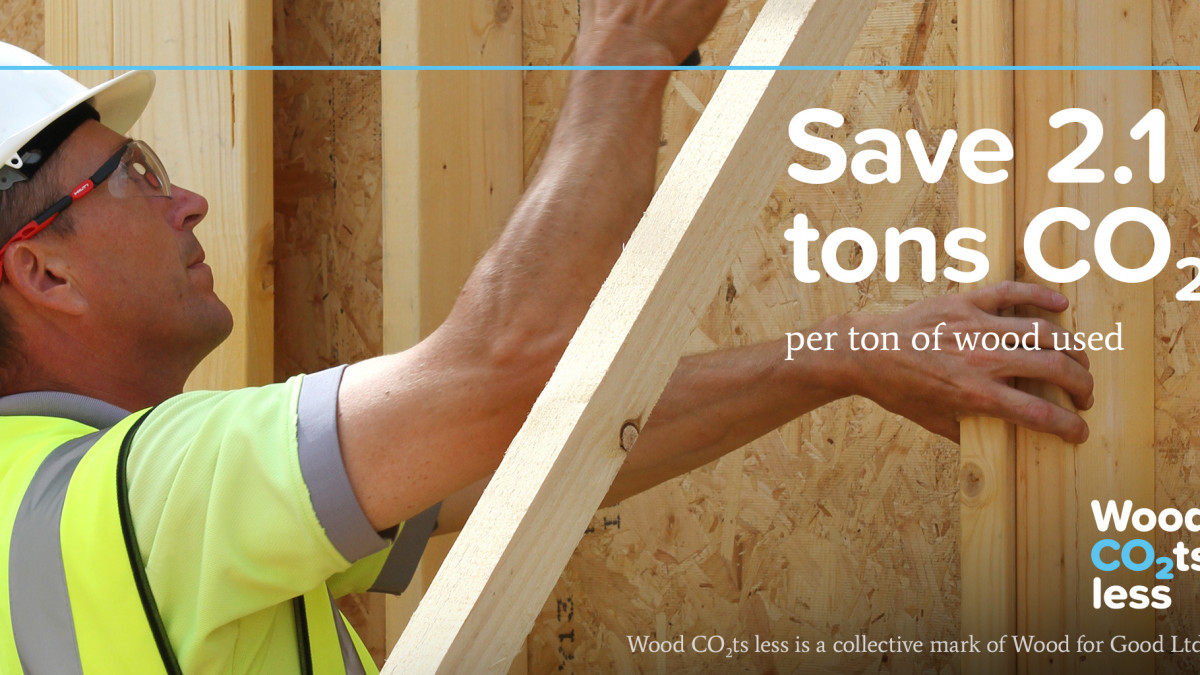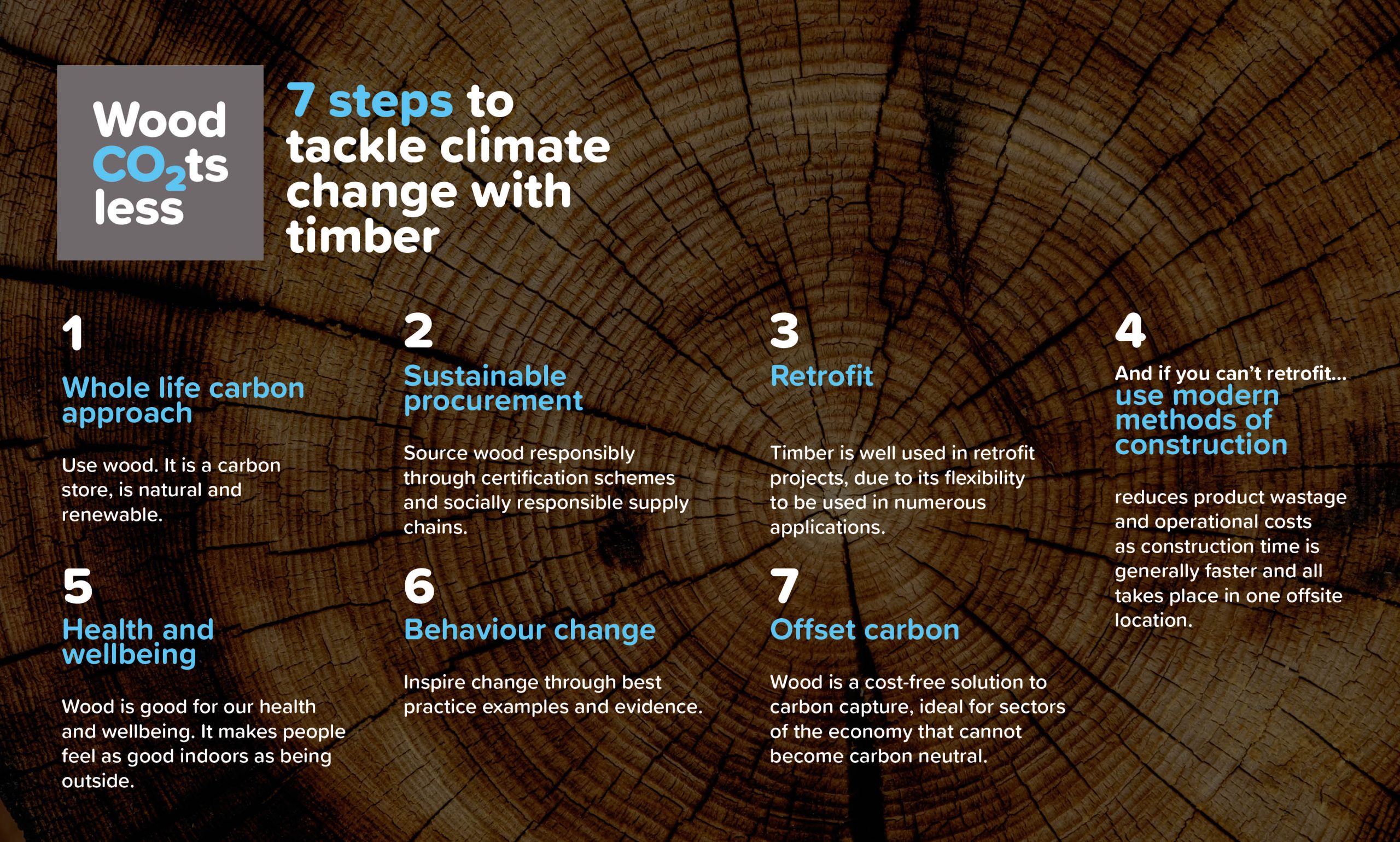Low Carbon
Fact: Wood CO2ts less. Using more wood can actively contribute to reducing our CO2 emissions, in turn, helping to fight climate change.

Using more wood can help us reduce CO2 and fight climate change.
Using more timber products can have a positive difference for a more sustainable built environment. Using more wood also encourages a flourishing forestry industry which means more trees are planted, grown and managed in a sustainable way.
Here are some facts about sustainable forestry, the wood products they produce and how this supply chain can help us fight climate change due to wood’s natural low-carbon properties.
- Trees capture CO₂ from the atmosphere and store it as carbon
- Each 1m3 of wood grown by a tree holds 0.9 tonnes of CO₂ ‘sequestered’ from the atmosphere
- Mature trees are harvested and their carbon is captured and stored in buildings and other wood products
- A mature tree is often at least 20 years old – in that time that a tree is growing, it continues to capture and store more CO2 out of the atmosphere
- In the UK, once a mature tree is harvested, more trees are planted in its place – in a sustainable forestry model at least 2 new trees are planted for every tree harvested, but this number can be much bigger.
- Wood products carry that stored carbon, captured from CO2 in out atmsophere, for its entire life. The wooden tables and chairs in your kitchen all hold carbon, as do wooden doors, stairs, and timber products used in the construction of a building.
- Using wood instead of other materials saves CO2 emissions, both through the carbon captured and stored in the wood product and the avoidance of using alternative CO2-intensive materials.
- Traditional materials such as steel or concrete can use a lot more CO2 in their manufacturing process. Meta-analyses of the average impact of using wood instead of concrete suggest an average reduction of 2.1 tons of carbon dioxide emissions per 1 ton of wood products used compared to concrete.
- Using wood in construction is a cost-effective solution to carbon capture. There is no need for man-made carbon capture technology to ‘offset’ carbon emissions when using timber.
- Timber products can be protected with additional treatments, repaired, reused and recycled numerous times before they are at the end of their life. For example, a timber palette could be repaired up to 12 times before it is turned into wood chips that can then be used to create a chipboard panel that may be used in construction – a wood product is easily recycled and reused, allowing the carbon it stores to stay ‘locked away’ for many years.
- We can keep planting more trees to replace wood products – and every tree planted captures more CO2.

For more information about how wood can help mitigate the effects of climate change, resources, evidence and facts please visit out Wood CO2ts less page. Wood CO2ts less is the timber industry’s messaging campaign to promote the low carbon benefits of wood products.
